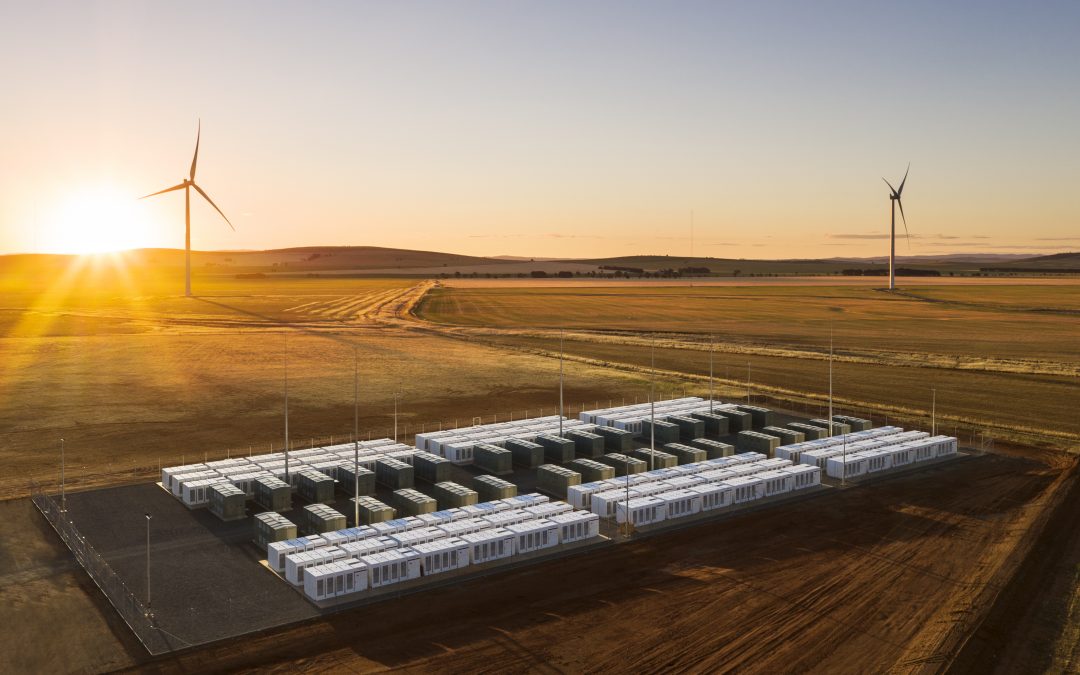French renewables giant Neoen, which only submitted its Development Application for the colossal Goyder Renewables Zone (GRZ) project last month, has already landed a big 14-year contract with the Australian Capital Territory (ACT).
The deal will see GRZ supply 100 MW of wind energy from its first stage of development, as well as the construction of a 50 MW (at least) energy storage facility in Canberra that will be owned by Neoen but in which residents of the ACT will be able to invest.
The ACT Government, which completed its shift to 100% renewable electricity in October 2019 with the purchase of clean energy from Neoen’s Hornsdale Wind Farm, awarded the contract through the ACT’s fifth Renewables Reverse Auction as it looks to reach net zero emissions by 2045, making it the fourth contract between the long-term partners.
The GRZ, if you’ve been living under a rock, is Neoen’s planned hybrid renewable energy project in South Australia consisting of 1200 MW of wind, 600 MW of solar, and 900 MW/1,800 MWh of battery storage. The project, and indeed the 14-year contract with the ACT, is heavily reliant on the yet-to-be-built SA-NSW Interconnector. This announcement is a sanguine portent that the 900-kilometer, $1.53 billion transmission line built, which got the go-ahead from the Australian Energy Regulator (AER) in January, will get built.
Two birds, one reverse auction
Neoen was not the only winner out of the reverse auction however, as the ACT also signed up for another 100 MW of wind power from Stage 2 of Global Power Generation’s (GPG) Berrybank Wind Farm in Victoria, a deal which will see another big battery built to keep power poised to avoid blackouts during periods of high demand and when the fossil fuel generators balk in the heat.
The two injections of renewable energy and the assurance of big battery support means that this auction will deliver significantly lower prices to ACT residents. The result is an average price expected below $50 MW/h. The ACT have granted Neoen a 14-year feed-in tariff at $44.97 per MW/h, and GPG a 10-year feed-in tariff at $54.48 per MW/h. The ACT Government therefore expects the total cost of the FiTs to remain below $4.90 per household per week.
ACT’s Climate Change and Sustainability Minister Shane Rattenbury said that his Government is proud to be the nation’s climate action capital. “Already, Canberra’s renewable energy and clean tech industries have attracted over $2 billion dollars of investment in large-scale wind and solar renewable infrastructure across Australia, and more than $500 million dollars of investment directly into the Canberra region.”
“These big batteries” continued Rattenbury, “mean that our small jurisdiction is again punching above our weight when it comes to real climate action. Our investment is on par with the Tesla Hornsdale battery on a per capita basis – the largest investment of its kind in the world.”
Originally, the base requirements of the tender process required a smaller battery capacity, but Neoen has committed to build a facility of at least 50 MW. Neoen Australia’s Managing Director, Louis de Sambucy, said that the GRZ “is a landmark project that will not only provide a significant boost to the South Australian economy but will also allow all Canberrans to benefit from clean, reliable and affordable electricity.”
As part of the contract, Neoen will also co-develop programs in cybersecurity for renewables at the Canberra Institute of Technology’s Renewable Energy Skills Centre of Excellence, as well as focusing on Indigenous land care and hydrogen. The work will begin at the Australian National University (ANU) with a project focused on grid-scale battery performance and a feasibility study for a solar panel and/or battery recycling facility.
This content is protected by copyright and may not be reused. If you want to cooperate with us and would like to reuse some of our content, please contact: editors@pv-magazine.com.









Why French, should all be Australian…
We have the tools and the talent 😊